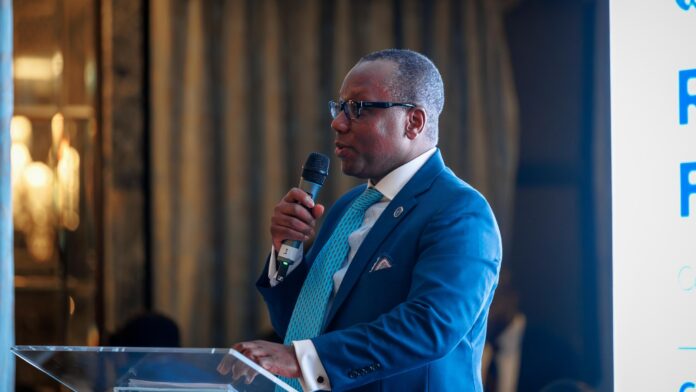Written by: Dawda Baldeh
Dean Adansi, Chief Executive Officer (CEO) of Ghana International Bank (GHIB), has set out a financing blueprint aimed at shifting Africa’s commodity trade from raw exports to value-added products, arguing that the continent’s current export model is leaving billions of dollars in potential earnings on the table. He noted that Africa’s share of global trade remains under three percent, partly because of a persistent trade finance gap that leaves exporters unable to invest in local processing.
“Interest rates are significantly higher than in the West in many African countries, making it very difficult for smaller entities with short-track records to obtain the financing they need to export commodities, or even to industrialize locally,” Mr. Adansi explained. Speaking to the BBC on the sidelines of the GHIB CONVERGE 2025 conference in London, he attributed the causes to structural issues: shallow capital markets, expensive working capital, and limited regulatory and infrastructure support.
He stressed that for every US$1 of trade, there is a US$1.70 impact on GDP. Closing an US$80 billion trade finance gap in sub-Saharan Africa could therefore generate an additional US$133 billion annually. “The consequences are significant; in jobs, in revenues, and in building the local savings needed to strengthen domestic capital markets,” he said. GHIB, which has operated from London for 65 years, is working with local financial institutions in West Africa to build capacity and make them more attractive to larger international lenders. This, he argued, creates a sustainable cycle in which local banks can support SMEs and smaller exporters.
GHIB’s operational record demonstrates the scale of its role. Over the past five years, the Ghana-owned bank has facilitated more than US$14 billion in trade flows, including US$10.6 billion in documentary trade collections and US$2.7 billion in primary trade finance transactions across sub-Saharan Africa. Downstream payments to West Africa in 2024 alone exceeded US$8.5 billion. Yet, Mr. Adansi emphasised that financing remains the main bottleneck to processing. Processing plants require substantial upfront capital, longer repayment periods, and risk assessments different from standard commodity trade deals. “Traditional banking products are rarely designed to support multi-year investment cycles in processing,” he said.
At the GHIB CONVERGE 2025 conference, examples of missed opportunities highlighted the issue. One case involved a contract worth more than US$10 million for onions destined for Senegal, fulfilled by European suppliers despite West Africa having sufficient raw output. The reason: African producers could not secure financing for processing capacity. GHIB’s plan calls for specialised commodity finance instruments such as pre-export financing tied to off-take agreements, inventory financing against stored commodities, and equipment leasing to reduce capital outlays.
Research presented at the conference suggested that raising Africa’s share of value-added exports from 14 to 25 percent could generate over US$50 billion in extra annual revenue and millions of industrial jobs. Ghana’s own recent gains in cocoa processing, with local capacity now at about 15 percent of output, alongside investments in gold refining, were cited as examples of what targeted finance can achieve. However, Mr. Adansi warned that processing cannot advance without parallel improvements in infrastructure: steady electricity supply, modern transport networks, and skilled technical labour. In many markets, tax regimes and export licensing rules also continue to favour unprocessed exports.
He pointed to the African Continental Free Trade Area (AfCFTA) as a structural opportunity to build regional-scale processing hubs serving multiple countries. Technology and transparency, he added, could also help African processors win better market terms. “Digital platforms can link processors directly with buyers, and blockchain can certify and track goods in ways that command premium prices,” he explained. Environmental finance could further support the shift. “Sustainably processed commodities increasingly earn higher prices,” he told delegates. “With well-regulated carbon markets and environmental finance tools, Africa can attract the capital it needs while meeting global sustainability demands.”
GHIB’s proposed approach relies on partnerships rather than direct lending alone, combining resources from commercial banks, development finance institutions, and governments. Mr. Adansi said pilot projects in selected commodity sectors could demonstrate the financial and development case for scaling up. For GHIB, the metrics of success go beyond profit. Employment creation, industrial capacity, and technology transfer are key goals. “If we can build value chains that keep more of the processing on African soil, the gains will be felt not just in GDP, but in livelihoods,” he said.




